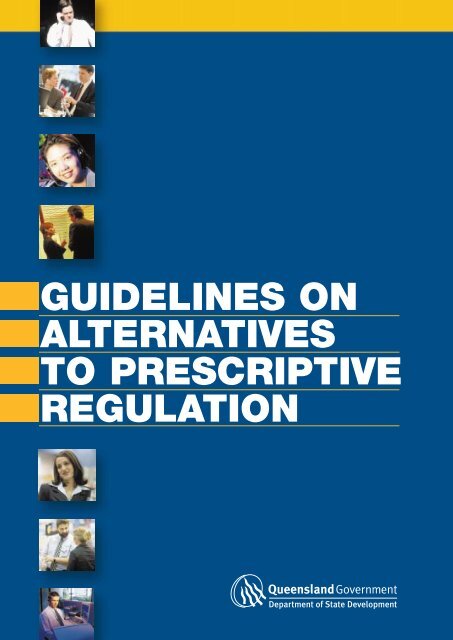Prescriptive Regulation : What it is
Prescriptive Regulation: What it Is Introduction: Prescriptive regulation refers to a specific form of regulatory approach that provides detailed instructions and guidelines on how individuals or organizations must conduct themselves within a particular industry or sector. This method focuses on defining specific rules and standards, leaving little room for interpretation, and ensuring compliance through strict enforcement. In this article, we will delve deeper into what prescriptive regulation is and its implications across various fields. 1. Understanding Prescriptive Regulation: Prescriptive regulation involves setting explicit rules and requirements that businesses must follow. These regulations leave little room for flexibility or interpretation, as they aim to establish a uniform standard across the industry. Unlike other regulatory approaches, such as interpretive regulation, prescriptive regulation focuses on providing clear instructions on what actions are required and what is prohibited. 2. Pros and Cons of Prescriptive Regulation: Prescriptive regulation has both advantages and disadvantages. Let's take a closer look at both aspects: Pros: - Clarity: Prescriptive regulation offers clear guidelines, leaving no room for ambiguity. This ensures that businesses are aware of the exact actions they need to take to comply with the regulations. - Standardization: By setting specific rules, prescriptive regulation helps establish a uniform standard across the industry. This allows for a more level playing field and promotes fair competition. - Easier enforcement: Prescriptive regulation simplifies the enforcement process, as violations can be easily identified and penalized based on explicit rules. Cons: - Lack of flexibility: Strict adherence to prescriptive regulations may limit innovation and hinder the development of new approaches or technologies within the industry. - One-size-fits-all: Prescriptive regulations may not consider the nuances and specific needs of different businesses or sectors, leading to unnecessary burdens or inefficiencies. - Slow response to change: Prescriptive regulation can be slow to adapt to rapidly changing market conditions or emerging risks, potentially becoming outdated over time. 3. Examples of Prescriptive Regulation: Prescriptive regulation exists in various industries and sectors. Here are a few examples: a) Food Safety Regulations: Prescriptive regulation is often implemented in food safety to ensure the health and safety of consumers. It establishes detailed guidelines on the handling, storage, preparation, and labeling of food products. By providing specific instructions, prescriptive regulations aim to prevent foodborne illnesses and maintain high-quality standards. b) Pharmaceutical Industry: Prescriptive regulation plays a crucial role in the pharmaceutical industry, where precise guidelines are required to ensure the safety and effectiveness of drugs. These regulations cover aspects such as manufacturing processes, quality control, labeling, and packaging. By following prescriptive regulations, pharmaceutical companies can ensure that their products meet rigorous standards. c) Aviation Industry: Prescriptive regulation is vital in the aviation industry to maintain safety and prevent accidents. It sets strict guidelines on aircraft maintenance, pilot training, air traffic control procedures, and more. These regulations leave no room for interpretation or deviation, aiming to protect the lives of passengers and crew members. 4. Frequently Asked Questions (FAQ): a) Is prescriptive regulation always the best approach? Prescriptive regulation has its merits, particularly when it comes to ensuring compliance and establishing uniform standards. However, in certain situations, a more flexible approach, such as interpretive regulation, may be more suitable to foster innovation or adapt to changing circumstances. b) How are prescriptive regulations enforced? Prescriptive regulations are typically enforced through inspections, audits, and penalties for non-compliance. Regulatory bodies conduct regular checks to ensure that businesses adhere to the prescribed rules. Violations can result in fines, suspension, or revocation of licenses, depending on the severity of the offense. c) Are there any alternatives to prescriptive regulation? Yes, alongside prescriptive regulation, other regulatory approaches exist, such as performance-based regulation. Performance-based regulations focus on outcomes, allowing businesses to achieve compliance through various methods as long as they meet the desired objectives. This approach provides greater flexibility while still ensuring desired outcomes are met. Conclusion: Prescriptive regulation serves as a vital tool in various sectors, offering clear instructions and guidelines to promote compliance and ensure uniform standards. While it has its advantages, the potential drawbacks must also be considered. Striking a balance between necessary regulations and fostering innovation is crucial for the long-term success of any industry. By understanding prescriptive regulation and its implications, businesses can navigate regulatory requirements effectively while striving for growth and development.  Image Source : sbcnews.co.uk
Image Source : sbcnews.co.uk  Image Source : www.globalbankingandfinance.com
Image Source : www.globalbankingandfinance.com  Image Source : www.slideserve.com
Image Source : www.slideserve.com  Image Source : tamaradaly.ca
Image Source : tamaradaly.ca  Image Source : www.yumpu.com
Image Source : www.yumpu.com  Image Source : www.yumpu.com
Image Source : www.yumpu.com  Image Source : sparkholoser.weebly.com
Image Source : sparkholoser.weebly.com  Image Source : www.researchgate.net
Image Source : www.researchgate.net
NSoft Or Strict Rules: Outcome-based Vs Prescriptive Regulation
 Image Source : sbcnews.co.uk
Image Source : sbcnews.co.uk PRESCRIPTIVE REGULATION WON’T STOP THE CYBER CRIMINALS
 Image Source : www.globalbankingandfinance.com
Image Source : www.globalbankingandfinance.com PPT - Is It Always Right To Be Right? PowerPoint Presentation, Free
 Image Source : www.slideserve.com
Image Source : www.slideserve.com right prescriptive regulation always improvements achieve either term safety culture performance change step long will
Prescriptive Or Interpretive Regulation – Research Snapshot – Dr
 Image Source : tamaradaly.ca
Image Source : tamaradaly.ca Guidelines On Alternatives To Prescriptive Regulation - Investment
 Image Source : www.yumpu.com
Image Source : www.yumpu.com Alternatives To
 Image Source : www.yumpu.com
Image Source : www.yumpu.com Word Vs Word Claim - Sparkholoser
 Image Source : sparkholoser.weebly.com
Image Source : sparkholoser.weebly.com Asymmetry Of Proscriptive And Prescriptive Moral Regulation. | Download
 Image Source : www.researchgate.net
Image Source : www.researchgate.net prescriptive moral regulation asymmetry
Word vs word claim. Asymmetry of proscriptive and prescriptive moral regulation.. Prescriptive regulation won’t stop the cyber criminals. Nsoft or strict rules: outcome-based vs prescriptive regulation. Guidelines on alternatives to prescriptive regulation